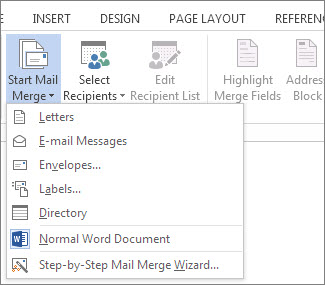
- HOW TO DO A MAIL MERGE IN WORD 2010 FROM EXCEL FOR LABELS HOW TO
- HOW TO DO A MAIL MERGE IN WORD 2010 FROM EXCEL FOR LABELS FULL
- HOW TO DO A MAIL MERGE IN WORD 2010 FROM EXCEL FOR LABELS CODE
HOW TO DO A MAIL MERGE IN WORD 2010 FROM EXCEL FOR LABELS CODE
Code 39 Leading & Trailing Asterisks Not Working

To get rid of an extra page that won’t go away when you place the cursor at the beginning and hit Backspace: There’s an Extra Page at the Bottom Of My DocumentĪs mentioned before, Word likes to insert spaces. Clicking that will bring up the Mail Merge Wizard to help walk you through creating your mail merge.Ĥ. If you go to Start a Mail Merge and look at the drop down you get when you click it, “Step by Step Mail Merge Wizard…” will be the last option. Sometimes the Mail Merge Wizard will not launch automatically. Started The Mail Merge But Don’t Know What To Do Next

This will force Word to go to the next record.ģ. Use a Next Record rule beside each instance of the merge field that you want Word to move to the next record. Having multiple copies of the same merge field on the same page can cause the first record to be repeated in all instances of the merge field on that page. Make sure any leading and trailing characters are right next to the merged field and don’t have any spaces between them and the merged field. If your barcodes aren’t working correctly, check for extra spaces around the merged field. Microsoft Word can sometimes add in extra spaces where you don’t want them.
HOW TO DO A MAIL MERGE IN WORD 2010 FROM EXCEL FOR LABELS HOW TO
We’re going to look at some of the most common problems and look at how to fix them. Since Microsoft Word looks at all of the pages as a whole vs Microsoft Publisher which looks at a single instance of your project, some problems can arise in Microsoft Word when mail merging. This would allow you to easily use the GROUP BY capabilities that you seek.It’s easier to do mail merging in Microsoft Publisher, but it’s possible to do a nice mail merge in Microsoft Word. There you can do many types of processing-just as you can with an SQL database-in order to create views of information (queries) that can be used as the source data for a Word mail merge. The other option is to forego Excel and place your data in a real database program, such as Access. (Full information on some of these methods can be found on the ExcelTips site. There are numerous ways that you can work with your data, including the removal of duplicate records or using macros to condense duplicate records into a single record. This means that it may be best to examine the source and do any sorting, condensing, and selecting in the workbook before you do the merge. The merge feature generally takes information as it is fed from the source document. If you are doing any other type of merge (such as merging to letters or to labels), then you are pretty much out of luck.
HOW TO DO A MAIL MERGE IN WORD 2010 FROM EXCEL FOR LABELS FULL
If you are doing that type of merge, you can find full information on how to group records at this Microsoft Office Support article: This is not something that can be easily done with Word's mail merge capabilities, with one exception: You can do it if you are doing a directory-type merge.

She wants to "group" records so she can put all the records for a given individual into a single merge document.

She notes that if she was using SQL she could use "GROUP BY" to make sure that all the records of a given individual were grouped together. Erin wants to do a mail merge using source data that is in an Excel worksheet where it is possible for a given individual to have multiple rows of data.


 0 kommentar(er)
0 kommentar(er)
